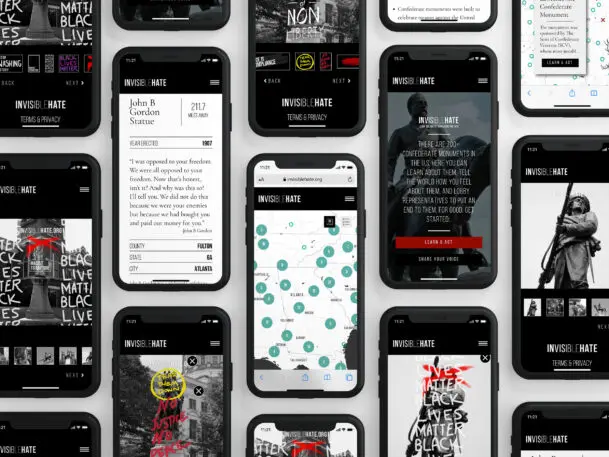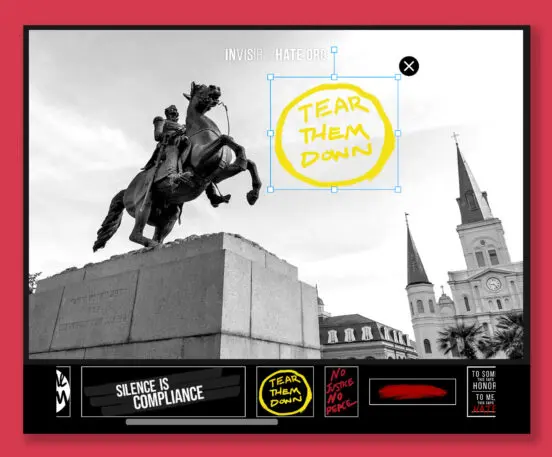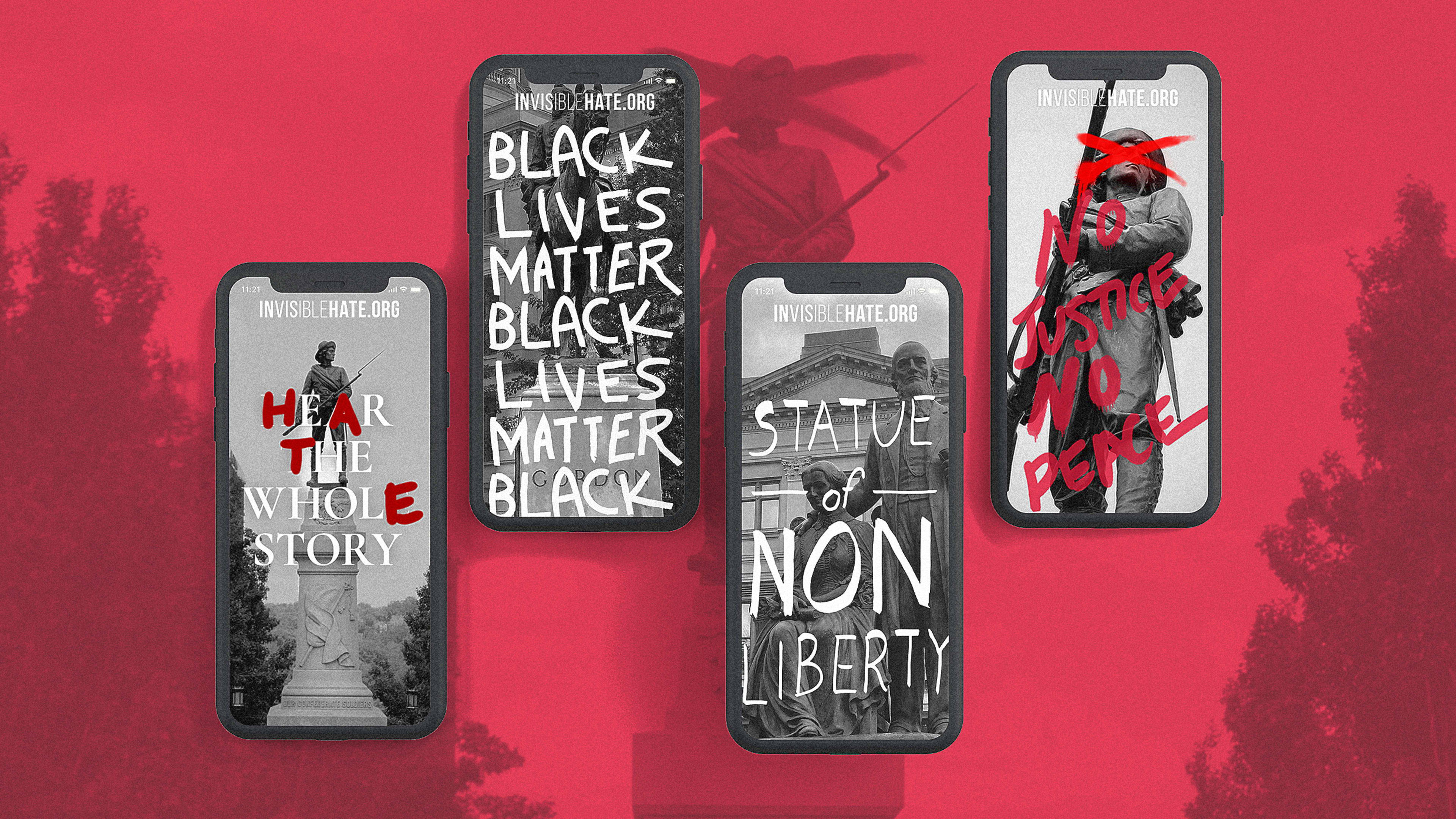Across the country, on pedestals and in front of government buildings, more than 700 monuments to the Confederacy still stand. In the form of statues, museums, parks, and fountains, these monuments celebrate a racist legacy under the guise of Civil War commemoration. Most of these monuments were built in the 1900s and, though recent protests have brought renewed focus to their racist symbology, many of them stand unobtrusively and with little signage or information to explain the history they represent.
To expose the racism and bigotry beneath these monuments—and to encourage people to call for their removal—a new web application and interactive map has just been released. Developed by creative agency 22Squared in partnership with the Atlanta chapter of the National Association for the Advancement of Colored People, the map is called Invisible Hate. Built by production company M ss ng P eces, it reveals where these hundreds of monuments are located around the country, and provides information about the racist history of what they commemorate.

NAACP Atlanta has been working for years to tear down these monuments, most notably calling for the removal of the oversized bas relief carving of Confederate leaders on the side of Georgia’s Stone Mountain. And while that three-acre carving is one of the most conspicuous monuments, there are hundreds more sitting in cities around the country, sometimes with little to indicate to the casual observer the racist foundations beneath them.
22Squared, based in Atlanta and Tampa, Florida, began thinking about this widespread problem about three years ago. Creative director Alex Lukacs says the idea for Invisible Hate came to her after she began learning more about the stories behind some of the monuments. As a white person who grew up seeing these monuments on school field trips to the Georgia state capital, she said she felt ignorant for never knowing what exactly the monuments were actually celebrating. “I hadn’t been taught the correct history in school,” says Lukacs. Her firm reached out to NAACP Atlanta to explore ways technology could help people better understand what the monuments represent.

“For us the removal of the Confederate monuments has never been a political issue. It’s a human issue,” says Courtney Jones, a director at 22Squared. The photo tags and the ability to share defaced monuments on social media is a way to allow more people to voice their outrage over these monuments, even if they can’t see them in person.

Though the idea for the platform has been in development for the past three years, it is being released at a moment of reckoning. With Confederate monuments seeing renewed attention during recent protests around the country—including removals both sanctioned and community-driven—Rose says there’s a palpable momentum for action. “It’s so inspiring and gratifying,” Rose says of the monuments that have been taken down in recent months. “I’m like a kid at Christmas when another one moves.”
Invisible Hate is also tracking these changes, marking the successful removal of monuments on the map with a red X. Rose is hopeful the platform will help lead to more. “One of the buzzwords right now is reparations, which comes from ‘repair,'” Rose says. “And we see this as a way to repair a bad system.”
Recognize your brand’s excellence by applying to this year’s Brands That Matter Awards before the early-rate deadline, May 3.
